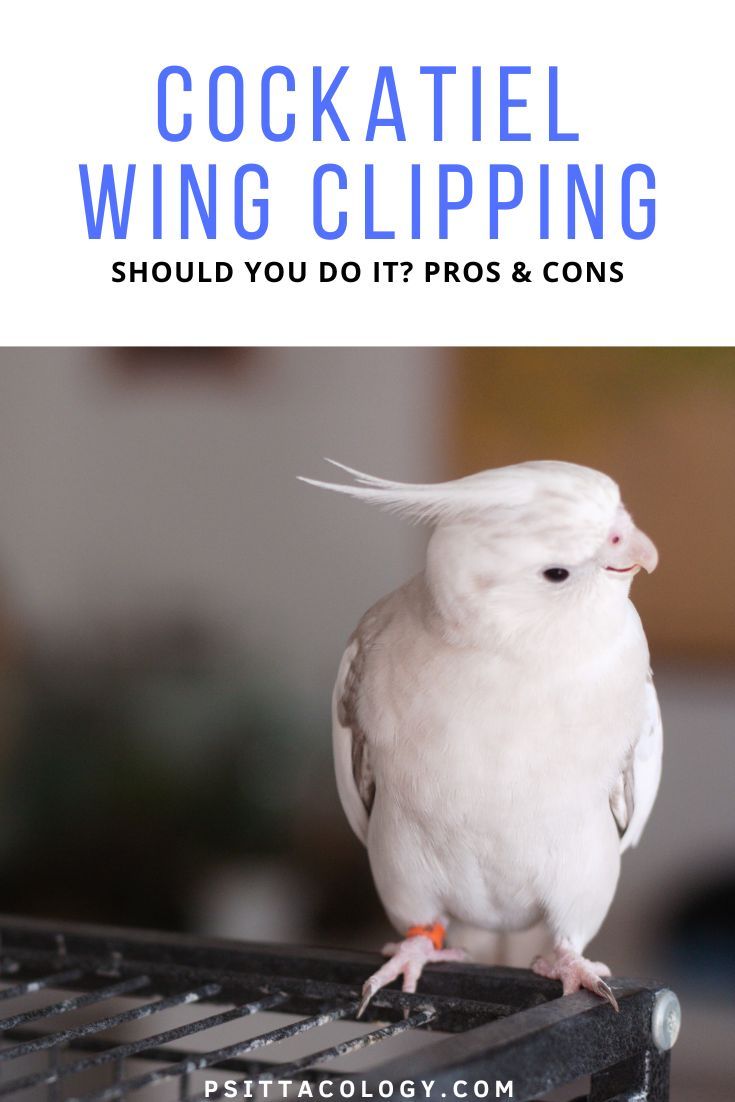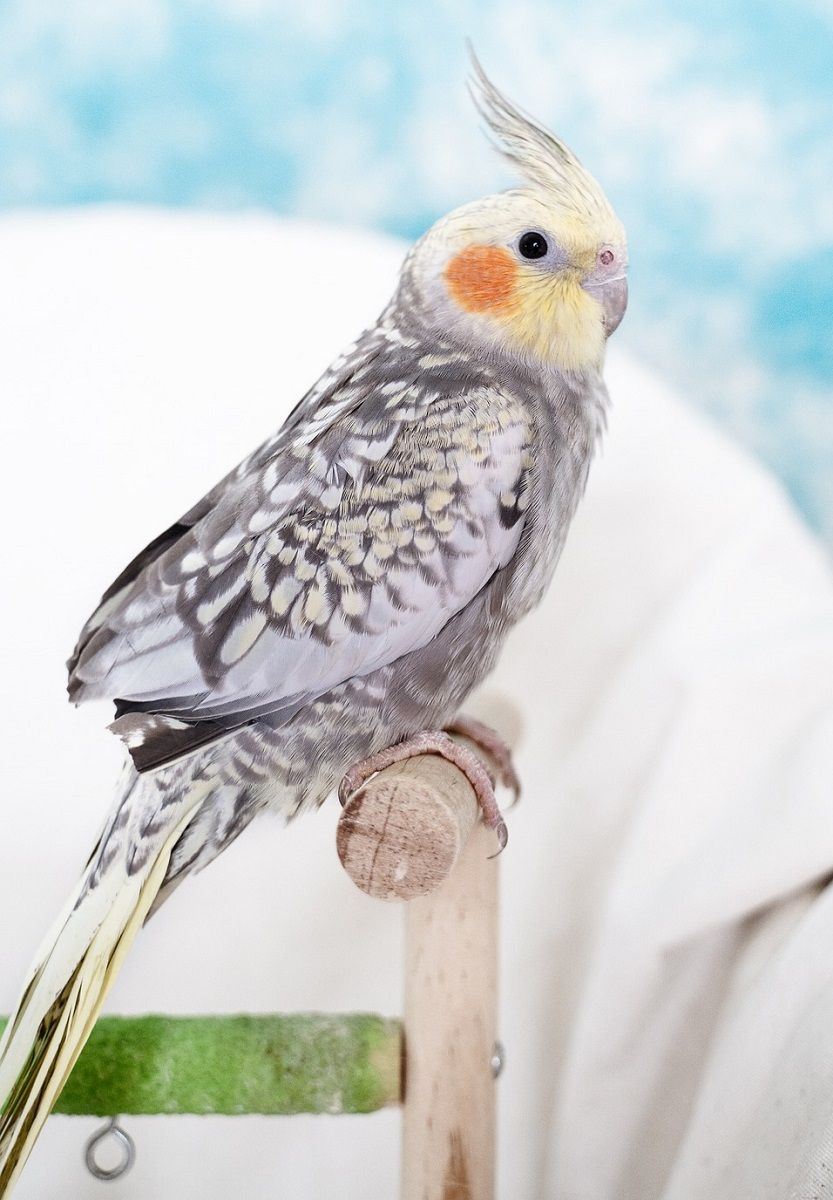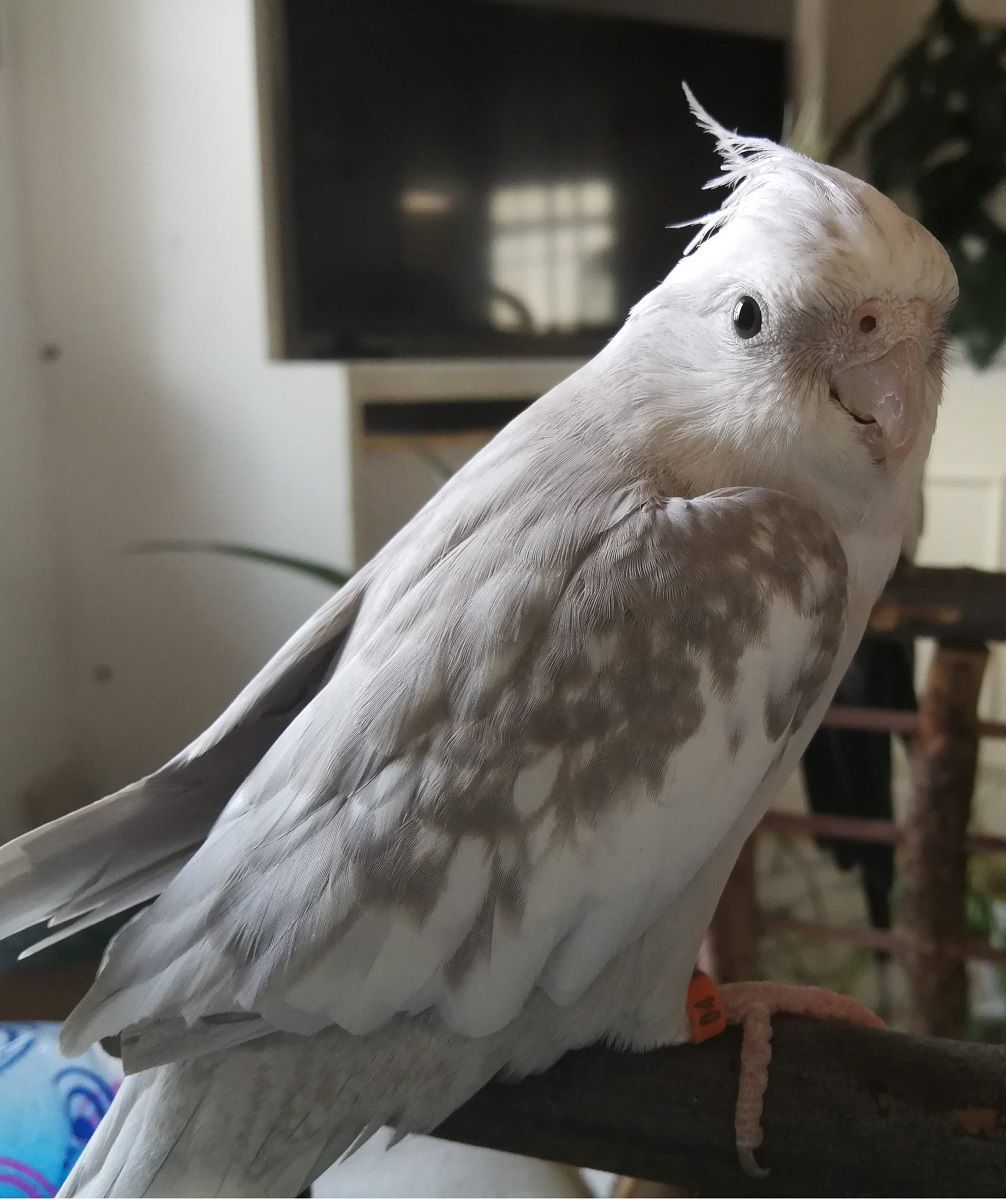If you’re thinking of adding a cockatiel to your family, you may have heard of the concept of wing clipping. It’s supposed to make a bird easier to handle and help prevent escape. Clipping a cockatiel’s wings can sound like a good idea, but is it?
Below, let’s have a look at what wing clipping is and what the pros and cons are. I’ll lay out all the arguments, but let me make this clear before we start: based on my personal experience, I don’t think it’s a good idea.
Hopefully, by the end of this post, you’ll understand why clipping a cockatiel’s wings is not the way to go, and opt to leave your bird flighted.
What is wing clipping?
Wing clipping or wing trimming is a practice that involves cutting off part of a bird’s primary flight feathers (some or all of them). This is done in order to make it unable to fly, or at least unable to do more than glide.
Wing clipping, if the procedure is performed correctly, doesn’t hurt a bird. There are no nerves in the parts of the feathers that are cut, and none of the actual wing is removed.
Trimmed wings also don’t stay this way forever. Cockatiels molt their feathers regularly, meaning they have to be re-clipped every few months to prevent them from regaining their ability to fly.
Wing clipping is commonly performed on pet parrots like cockatiels. It’s still seen as normal practice in many places and by many veterinarian clinics. But is that right? Cutting a feather in itself doesn’t hurt a bird, but what about the long-term effects?
Below, let’s have a look at the pros and cons of clipping a cockatiel’s wings, so you can make an informed choice on whether you would like your bird to be clipped or not.
By the way: this stuff applies to all parrots. I just get asked about cockatiels most often, probably because they’re among the most popular pet parrots out there.

The pros of clipping a cockatiel’s wings
There are a few different reasons for parrot owners to opt to have their bird’s wings clipped and limit its ability to fly.
A few of the most common motivations include:
- Handling: it’s said a parrot with clipped wings is easier to tame.
- Escape: a parrot who can’t fly won’t be able to escape through an open window.
- Safety: an unflighted parrot can’t fly into a mirror, or reach dangerous places like a lit stove.
- Behavior control: some people opt to clip a parrot’s wings if it’s prone to swooping or attacking
- Medical issues: wing clipping can be necessary if a parrot has balance issues, is blind, is recovering from surgery, or similar.
The cons of clipping a cockatiel’s wings
So far, wing clipping might sound like a pretty good option for your cockatiel. It doesn’t hurt the bird, and it can help keep it safe. Who doesn’t want that? Unfortunately, it’s just not that simple.
Here are some (in my opinion) extremely compelling reasons to keep your cockatiel flighted:
- Injury: Parrots with clipped wings still want to fly. According to research, this makes them prone to falling, which can cause serious injuries.
- Obesity: Muscle atrophy sets in quickly after your cockatiel’s wings are clipped. The inactivity can cause obesity, already very common in pet parrots, which in turn is a risk for serious health issues/
- Unwanted behaviors: Clipped parrots may “misbehave”, bite, or scream excessively to let out their pent-up energy.
- Stress: Flight is a cockatiel’s primary means of protection. Not being able to fly can make it feel unsafe, which leads to constant stress.
- Training issues: Wing clipping might actually make handling more difficult, as your cockatiel is more likely to resort to biting. After all, it’s now unable to fly away if it doesn’t like the situation.
- Feather plucking: According to research, in some cases, the frustration of not being able to fly causes a parrot to start plucking. This behavior is very hard to stop.
- Flight fright: If your cockatiel has fallen enough times, it might become highly insecure about flying even when its wings are no longer clipped. Teaching it to fly again is hard.
Apart from having evolved a pulmonary and cardiovascular system that has been designed for coping with flight, parrots have evolved to use their skill in flight behaviourally; flight is their primary means of locomotion, parrots fly as a form of defence to escape predation, or a stimulus that they are frightened of. Removing the option for flight will increase the likelihood of aggression
Stress in parrots: what it looks like and considerations to avoid distress, 2017
Some folks opt for a “partial clip” that allows short flights. This still comes with many of the disadvantages of clipping, while negating most of the advantages. Your bird can still fly into harm’s way in the house this way, after all!
If you’re still not convinced, just think for a second. Flight is what defines a cockatiel. Taking this away means you’re intentionally giving it a disability. Parrots whose wings were clipped when they were babies might never learn to fly at all, even if their feathers are allowed to regrow.
Negative physical and psychological effects as a result of clipped wings are pretty much unavoidable. The negative effects of having a flighted parrot (like safety considerations) are not unavoidable. So which is preferable?
Did you know? Wing clipping doesn’t fully prevent a cockatiel from escaping through an open door or window. They can still make their way outside, and since they’re so light, they can still be carried off by the wind even with clipped wings. Never take ANY parrot outdoors unleashed or uncaged.

Alternatives to wing clipping
OK, I hear you say. There are some definite cons to clipping a cockatiel’s wings, but the pros are also quite convincing. No one wants their parrot to slip out of an open door, never to be seen again.
The thing is, though, that 4 of the 5 reasons commonly cited as “pros” in favor of wing clipping are easily resolved through other means. The 5th, medical issues, is of course a different story. Your vet should be able to judge this.
Let’s go over those reasons to clip again and look at some alternatives.
- Handling: we’ve seen that clipping can make it harder, not easier. Instead, opt for positive reinforcement-based parrot training using food as motivation.
- Escape: diligence is key, although mosquito netting is pretty helpful as well. Place your cockatiel in its cage before you open doors or windows. Make sure it’s recall-trained and comes when you call it.
- Safety: any space your cockatiel has access to should be “parrot-proofed”. It usually shouldn’t have access to the kitchen at all.
- Behavior control: training, hormone control, or even consulting with a parrot behavioral specialist can help. Wing clipping is likely to make things worse. In any case, cockatiels don’t tend to be prone to aggression anyway!
Tip: I know it’s scary to let a flighted cockatiel out of its cage for the first time. It’s important to make sure it safely learns to navigate your home. Cover windows and mirrors, or even consider letting it fly around in a large playpen for a few days first.
What if my cockatiel has clipped wings?
If you brought your cockatiel home from the breeder or pet store with clipped wings, you may run into some of the issues we’ve discussed in this article.
I’ve been there! I adopted my cockatiel Boris from a friend of a friend who was moving abroad. As one of his other cockatiels had escaped from an open window at some point, he meticulously kept Boris’ wings clipped.
The problem was that Boris really wanted to fly. My other birds are all flighted, so whenever they took off, he attempted to as well—and he’d spiral and crash to the floor. At least his muscles weren’t atrophied, but I definitely worried he’d get hurt.

I ended up taking a bunch of measures to try and keep Boris safe without having to lock him up for months. You can try these as well:
Firstly, I reduced the height of his #1 hang-out spot, the top of his cage. That way, he wouldn’t fall as far. I also placed soft material on the cage bottom and around it to cushion him. This worked out well, as he never did end up injuring himself.
I also recall trained Boris so he would come when I presented my finger. By holding my finger far away enough to force him to use his wings to reach me, but not so far that he wouldn’t be able to reach with his clipped feathers, I made sure he practiced flying as much as possible.
It all worked out: although it took ages, Boris was eventually able to soar across the living room with the other birds. It made him less prone to biting and clearly more confident.
Did you know? It can take a frustratingly long time for clipped wings to grow back. Unlike when a feather is pulled out, which triggers the bird’s body to replace it immediately, clipped feathers need to be molted naturally. This can take months.
Imping
If you feel your cockatiel really needs its ability to fly, like if it’s hurting itself, you can consider a procedure known as “imping“. It’s pretty cool: other parrots’ plumage or its own previously molted feathers are attached to your bird’s trimmed flight feathers, allowing it to fly again.
Not all avian vets will be able to imp a cockatiel. If you’re interested, give yours a call and they may be able to point you in the right direction.
Conclusion
Although it may be necessary in some situations, like when medical issues are at play, clipping a cockatiel’s wings usually severely affects its quality of life. Please consider keeping your bird flighted!
If you have any more questions about the practice of clipping a cockatiel’s wings or if you’d like to share your own experiences, be sure to leave a comment below. I know this is still a heated topic, so keep it civil, please.
Sources & further reading
Glendell, G. (2010). Imping: a guide to wing repair. Veterinary Times, 40(39), 10-12.
Henley, E. (2017). Stress in parrots: what it looks like and considerations to avoid distress. The Veterinary Nurse, 8(8), 452-457.
Mahdavi, I., Abdi-Hachesoo, B., Ansari-Lari, M., & Haddad-Marandi, M. R. (2023). Prevalence and risk factors of feather damaging behavior in companion parrots: A cross-sectional study in Iran. Applied Animal Behaviour Science, 266, 106028.
